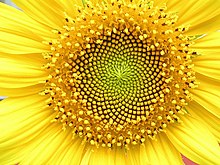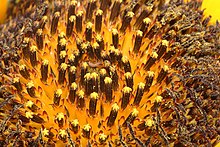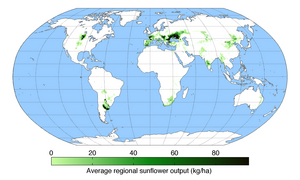Hi Everybody!!
Get Ready, here it comes! Summertime, summertime, sum sum summertime* Tonight I am celebrating a garden surprise Sunflower planted by one of the squirrel farmers and the fun to edit the photos on Picasa. Also, you will see the baby blue jay at the end of my desk, just the other side of the window in your photostudy. Kates Cabin Bird Sanctuary is enjoying abundant life. Baby birds are everywhere. The frogs and crickets are singing on Rainbow Creek. I encourage all of you to get out and get close to Nature.
I will be changing to this new format of photostudy and Google Index information only.
I will no longer be sharing You Tube Vids on this Blog.
FROM THE GOOGLE INDEX:
Picasa Web Albums: free photo sharing from Google
picasaweb.google.com/
Picasa Web Albums. Share photos with friends and family ...or explore public ...You've visited this page 5 times. Last visit: 1/28/12
Picasa
picasa.google.com/
Picasa 3.9 – Now with Google+ sharing and tagging.
You've visited this page 2 times. Last visit: 1/27/12
Picasa - Wikipedia, the free encyclopedia
https://en.wikipedia.org/wiki/Picasa
Picasa is an image organizer and image viewer for organizing and editing digital photos, plus an integrated photo-sharing website, originally created by a ...
https://en.wikipedia.org/wiki/Sunflower
Sunflower
From Wikipedia, the free encyclopedia
The sunflower (Helianthus annuus) is an annual plant native to the Americas. It possesses a largeinflorescence (flowering head), and its name is derived from the flower's shape and image, which is often used to depict the sun. The plant has a rough, hairy stem, broad, coarsely toothed, rough leaves and circular heads of flowers. The heads consist of many individual flowers which mature into seeds, often in the hundreds, on a receptacle base. From the Americas, sunflower seeds were brought to Europe in the 16th century, where, along with sunflower oil, they became a widespread cooking ingredient. Leaves of the sunflower can be used as cattle feed, while the stems contain a fibre which may be used in paper production.
| Helianthus annuus | |
|---|---|
 | |
| Scientific classification | |
| Kingdom: | Plantae |
| (unranked): | Angiosperms |
| (unranked): | Eudicots |
| (unranked): | Asterids |
| Order: | Asterales |
| Family: | Asteraceae |
| Subfamily: | Helianthoideae |
| Tribe: | Heliantheae |
| Genus: | Helianthus |
| Species: | H. annuus |
| Binomial name | |
| Helianthus annuus | |
Description [edit]
What is usually called the "flower" on a mature sunflower is actually a "flower head" (also known as a "composite flower") of numerous florets (small flowers) crowded together. The outer petal-bearing florets (ray florets) are sterile and can be yellow, red, orange, or other colors. The florets inside the circular head are called disc florets, which mature into seeds
The flower petals within the sunflower's cluster are always in a spiral pattern. Generally, each floret is oriented toward the next by approximately the golden angle, 137.5°, producing a pattern of interconnecting spirals, where the number of left spirals and the number of right spirals are successive Fibonacci numbers. Typically, there are 34 spirals in one direction and 55 in the other; on a very large sunflower there could be 89 in one direction and 144 in the other.[5][6][7] This pattern produces the most efficient packing of seeds within the flower head.[8][9][10]
Sunflowers commonly grow to heights between 1.5 and 3.5 m (5–12 ft.). The tallest sunflower confirmed by Guinness World Records is 8.0 m (2009, Germany). In 16th century Europe the record was already 7.3 m (24 ft., Spain).[11] Most cultivars are variants of H. annuus, but four other species (all perennials) are also domesticated. This includes H. tuberosus, the Jerusalem Artichoke, which produces edible tubers.
Cultivation and uses
| ||
| ||
| ||
| ||
| Though the image says seeds, pictured above are raw sunflower fruits intended for planting. |
To grow best, sunflowers need full sun. They grow best in fertile, moist, well-drained soil with heavy mulch. In commercial planting, seeds are planted 45 cm (1.5 ft.) apart and 2.5 cm (1 in) deep. Sunflower "whole seed" (fruit) are sold as a snack food, raw or after roasting in ovens, with or without salt and/or seasonings added. Sunflowers can be processed into a peanut butter alternative,sunflower butter. In Germany, it is mixed with rye flour to makeSonnenblumenkernbrot (literally: sunflower whole seed bread), which is quite popular in German-speaking Europe. It is also sold as food for birds and can be used directly in cooking and salads. American Indians had multiple uses for sunflowers in the past, such as in bread, medical ointments, dyes and body paints.[17]
Sunflower oil, extracted from the seeds, is used for cooking, as a carrier oil and to produce margarine andbiodiesel, as it is cheaper than olive oil. A range of sunflower varieties exist with differing fatty acid compositions; some 'high oleic' types contain a higher level of monounsaturated fats in their oil than even olive oil.
The cake remaining after the seeds have been processed for oil is used as a livestock feed. Some recently developed cultivars have drooping heads. These cultivars are less attractive to gardeners growing the flowers asornamental plants, but appeal to farmers, because they reduce bird damage and losses from some plant diseases. Sunflowers also produce latex, and are the subject of experiments to improve their suitability as an alternative crop for producing nonallergenic rubber.
Traditionally, several Native American groups planted sunflowers on the north edges of their gardens as a "fourth sister" to the better known three sisters combination of corn, beans, and squash.[18] Annual species are often planted for their allelopathic properties.[19]
However, for commercial farmers growing commodity crops, the sunflower, like any other unwanted plant, is often considered a weed. Especially in the Midwestern US, wild (perennial) species are often found in corn and soybean fields and can have a negative impact on yields.
Sunflowers can be used in phytoremediation to extract toxic ingredients from soil, such as lead, arsenic and uranium, and used in rhizofiltration to neutralize radionuclides and other toxic ingredients and harmful bacteria from water. They were used to remove caesium-137 and strontium-90 from a nearby pond after the Chernobyl disaster,[20] and a similar campaign was mounted in response to the Fukushima Daiichi nuclear disaster.[21][22]
FINALLY, WE GOT A LITTLE RAIN!
Images for blue jay bird
- Report images
Blue Jay - Wikipedia, the free encyclopedia
en.wikipedia.org/wiki/Blue_Jay
The Blue Jay (Cyanocitta cristata) is a passerine bird in the family Corvidae, native to North America. It is resident through most of eastern and central United ...
http://en.wikipedia.org/wiki/List_of_birds_of_Texas
List of birds of Texas
From Wikipedia, the free encyclopedia
The Accepted Texas Species List is maintained by the Texas Birds Record Committee (TBRC) of the Texas Ornithological Society. This list was last updated June, 2012. The Texas Accepted Species List is the largest state list in the lower 48 states, mostly due to the convergence of flyways over the state during migration seasons.
Birds in bold are considered to be Texas Review Species. These species have been seen in Texas in the past, but are rare and do not make an appearance every year. Some Texas Review Species have been seen only once on record. The TBRC requests that if anyone sees any of these review species in Texas, that they provide them with detailed documentation immediately. An (I) indicates that the species was introduced into Texas, an (E) means that the bird has become extinct since it was added to the list, and (e) (lowercase) means that the bird has been extirpated (not extinct but no longer found in Texas), and (u) means the bird has an uncertain origin (introduced or native).
- 1 Anatidae - Swans, Geese, and Ducks
- 2 Cracidae - Guans
- 3 Phasianidae - Partridges, Grouse, and Turkeys
- 4 Odontophoridae - Quail
- 5 Gaviidae - Loons
- 6 Podicipedidae - Grebes
- 7 Diomedeidae - Albatrosses
- 8 Procellariidae - Petrels and shearwaters
- 9 Hydrobatidae - Storm-Petrels
- 10 Phaethontidae - Tropicbirds
- 11 Sulidae - Boobies and Gannets
- 12 Pelecanidae - Pelicans
- 13 Phalacrocoracidae - Cormorants
- 14 Anhingidae - Darters
- 15 Fregatidae - Frigatebirds
- 16 Ardeidae - Bitterns, Herons, and Egrets
- 17 Threskiornithidae - Ibises and Spoonbills
- 18 Ciconiidae - Storks
- 19 Cathartidae - American Vultures
- 20 Phoenicopteridae - Flamingoes
- 21 Accipitridae - Kites, Eagles, and Hawks
- 22 Pandionidae - Osprey
- 23 Falconidae - Caracaras and Falcons
- 24 Rallidae - Rails, Gallinules, and Coots
- 25 Gruidae - Cranes
- 26 Burhinidae - Thick-knees
- 27 Charadriidae - Plovers
- 28 Haematopodidae - Oystercatchers
- 29 Recurvirostridae - Stilts and Avocets
- 30 Jacanidae - Jacanas
- 31 Scolopacidae - Sandpipers, Phalaropes, and Allies
- 32 Laridae - Gulls, terns and skimmers
- 33 Stercorariidae - Skuas
- 34 Columbidae - Pigeons and Doves
- 35 Psittacidae - Parrots and Parakeets
- 36 Cuculidae - Cuckoos, Roadrunners, and Anis
- 37 Tytonidae - Barn Owls
- 38 Strigidae - Typical Owls
- 39 Caprimulgidae - Goatsuckers
- 40 Apodidae - Swifts
- 41 Trochilidae - Hummingbirds
- 42 Trogonidae - Trogons
- 43 Alcedinidae - Kingfishers
- 44 Picidae - Woodpeckers and Allies
- 45 Thamnophilidae - Antbirds
- 46 Tyrannidae - Tyrant Flycatchers
- 47 Tityridae - Tityras and becards
- 48 Laniidae - Shrikes
- 49 Vireonidae - Vireos
- 50 Corvidae - Jays, Magpies, and Crows
- 51 Alaudidae - Larks
- 52 Hirundinidae - Swallows
- 53 Paridae - Titmice and Chickadees
- 54 Remizidae - Verdins
- 55 Aegithalidae - Bushtits
- 56 Sittidae - Nuthatches
- 57 Certhiidae - Creepers
- 58 Troglodytidae - Wrens
- 59 Cinclidae - Dippers
- 60 Regulidae - Kinglets
- 61 Polioptilidae - Gnatcatchers
- 62 Muscicapidae - Old World flycatchers
- 63 Turdidae - Solitaires, Thrushes, and Allies
- 64 Mimidae - Mockingbirds, Thrashers, and Allies
- 65 Sturnidae - Starlings
- 66 Motacillidae - Pipits
- 67 Bombycillidae - Waxwings
- 68 Ptilogonatidae - Silky-flycatchers
- 69 Calcariidae - Longspurs and snow buntings
- 70 Peucedramidae - Olive Warbler
- 71 Parulidae - Wood-warblers
- 72 Emberizidae - New World Sparrows and Allies
- 73 Cardinalidae - Cardinals, New World Grosbeaks and Buntings
- 74 Icteridae - Blackbirds, Meadowlarks, and Orioles
- 75 Fringillidae - Finches and Allies
- 76 Passeridae - Old World Sparrows
- 77 Presumptive species list
- 78 External links
- SEE ABOVE LINK TO PAGE FOR COMPLETE LIST
...this is brendasue signing off from Rainbow Creek. See You next time!
O+O



























No comments:
Post a Comment
Hi Everybody! Please say hello and follow so I know you are here! Due to the inconsideration of people trying to put commercials on my blog comment area, I have restricted use of anonymous posts. Sorry that some hurt all.
My public email is katescabin@gmail.com No spammers or trolls